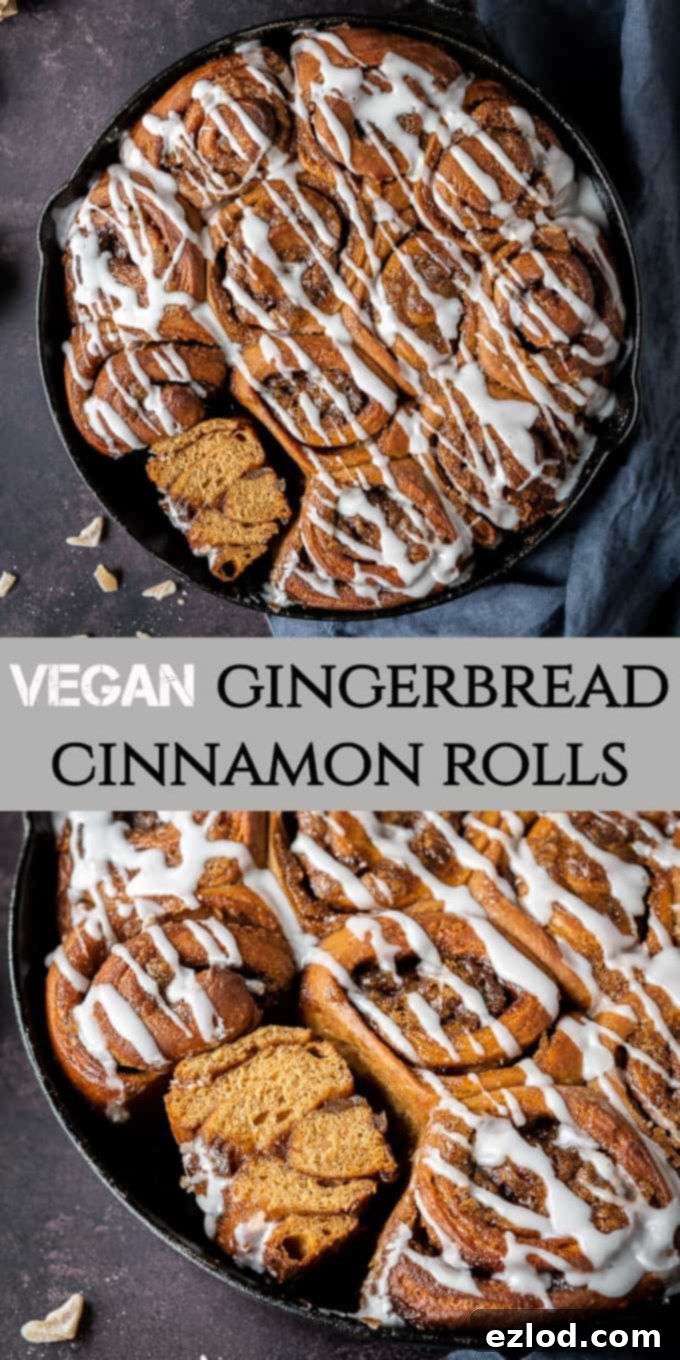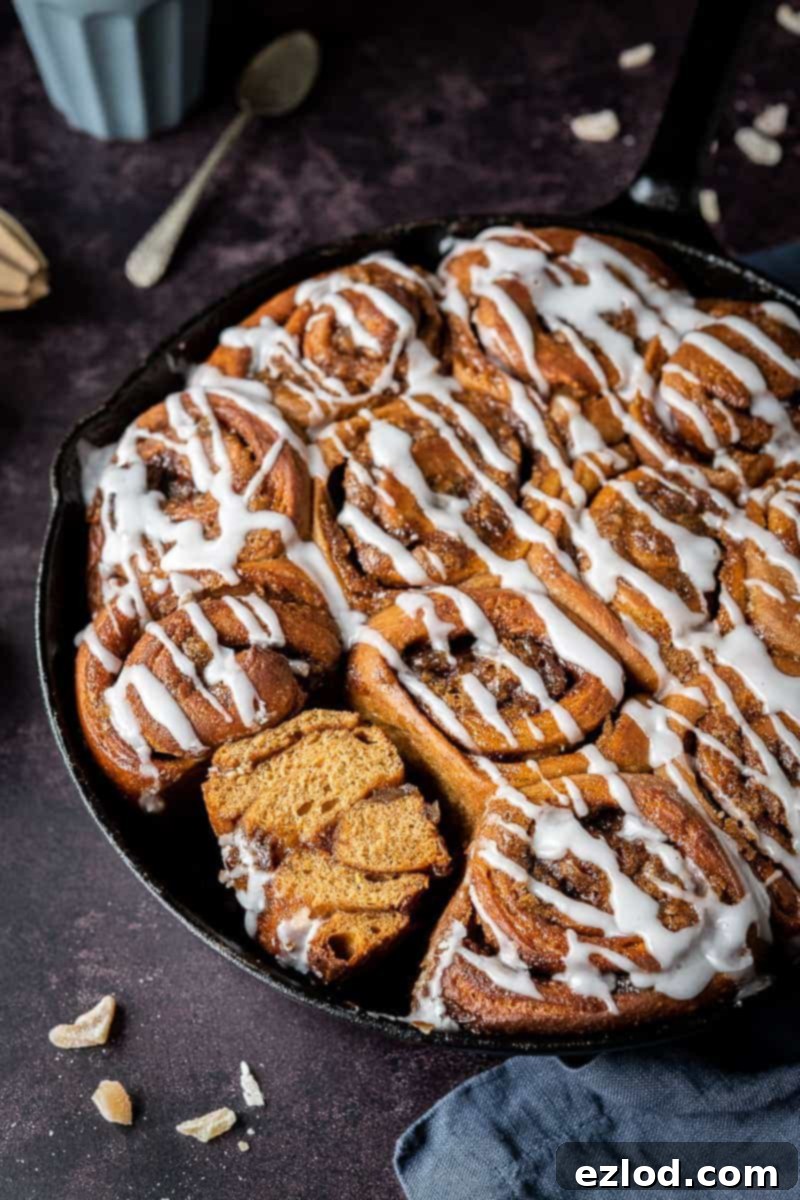Delicious Vegan Gingerbread Cinnamon Rolls: Your Ultimate Festive Breakfast Guide
Welcome to the world of truly irresistible festive baking! If you adore the warm, spicy embrace of gingerbread and the comforting swirl of a classic cinnamon roll, then you’re in for an extraordinary treat. These vegan gingerbread cinnamon rolls are not just a seasonal delight; they are a celebration of flavor, texture, and plant-based indulgence. Imagine soft, fluffy dough infused with the deep notes of dark brown sugar and treacle, generously filled with a fiery blend of ginger and cinnamon, and finished with a sweet, ginger-spiked drizzle. Perfect for a special Christmas morning breakfast, a cozy brunch, or a heartwarming snack, these rolls promise to fill your home with an aroma as magical as the holidays themselves.
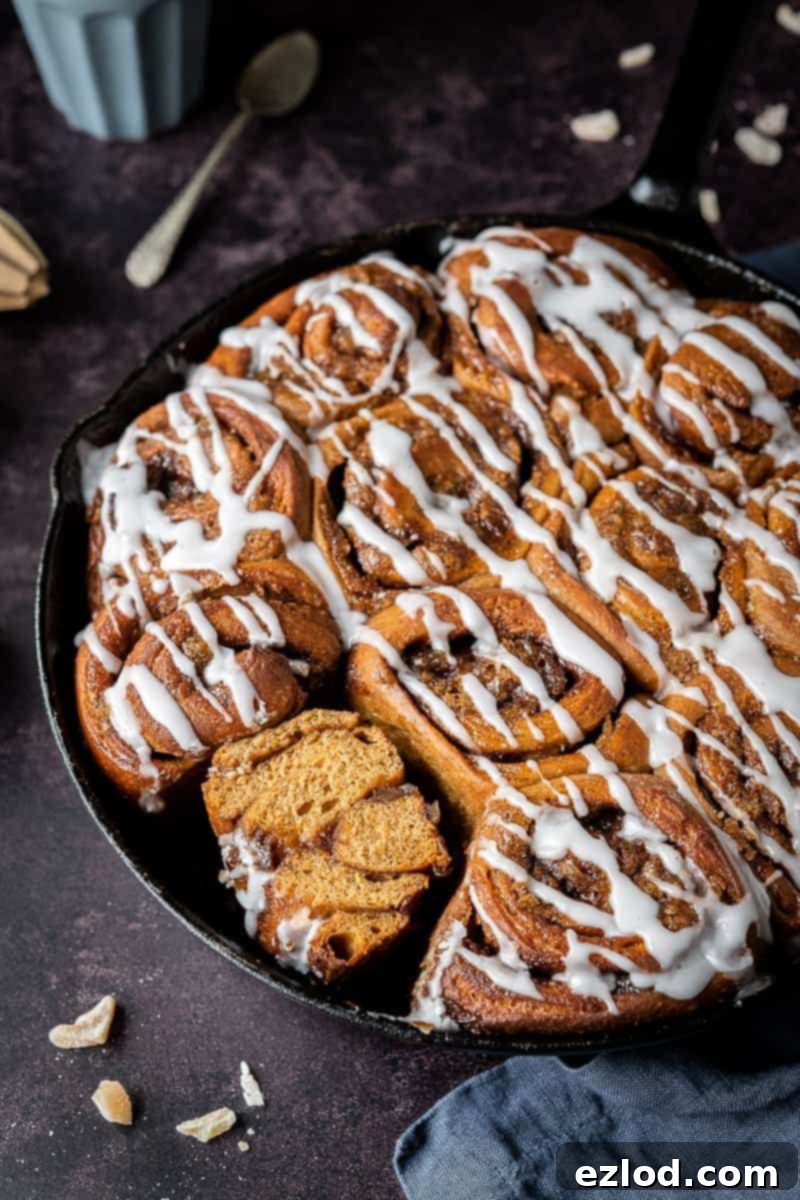
The Enchanting Fusion: Gingerbread Meets Cinnamon Rolls
Ginger has always held a special place in my heart, perhaps even more so than cinnamon. However, when these two magnificent spices unite, as they do in these amazing vegan gingerbread cinnamon rolls, the result is pure culinary magic. This recipe takes the beloved classic cinnamon roll and infuses it with the distinctive warmth and complex sweetness of gingerbread. The dough itself is a masterpiece, crafted with dark brown sugar and rich treacle (or molasses), which imparts that characteristic deep, caramel-like flavor and hue found in traditional gingerbread.
But the journey of flavor doesn’t stop there. The filling is where the ginger truly shines, blending harmoniously with cinnamon sugar. For those who crave an extra punch, a scattering of finely chopped crystallised ginger adds a delightful, fiery kick and a pleasant chewiness. If crystallised ginger isn’t readily available, stem ginger can be used, or it can be omitted entirely without compromising the rolls’ incredible taste and texture. However, I wholeheartedly recommend including it for that extra burst of warmth and an intensified ginger experience that elevates these rolls beyond compare. Each bite offers a harmonious balance of sweet, sticky, and wonderfully spicy – making them utterly irresistible for anyone seeking a dairy-free and egg-free festive treat.
Perfect for Every Festive Occasion
Whether you’re planning a lavish Christmas breakfast spread, an intimate holiday brunch, or simply want a comforting treat to enjoy with a cup of tea or coffee, these vegan gingerbread cinnamon rolls are an ideal choice. Their festive flavor profile makes them a standout addition to any holiday table, inviting warmth and cheer. Imagine serving them on a frosty morning, the aroma of ginger and cinnamon filling your home, creating memories that last a lifetime. They’re also wonderfully suited for casual gatherings, a cozy snack while watching fireworks on Bonfire Night, or as a thoughtful gift for friends and family.
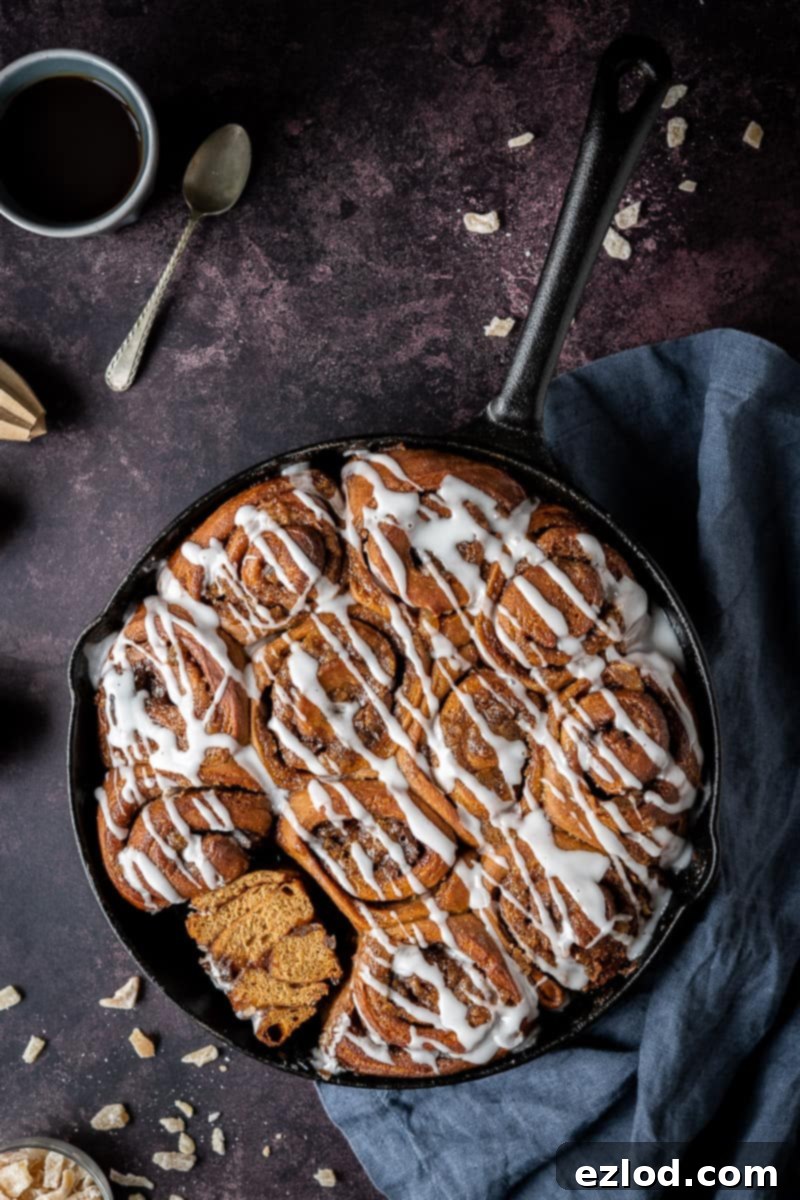
Crafting Your Vegan Gingerbread Cinnamon Rolls: A Step-by-Step Guide
Creating these delightful vegan cinnamon rolls is a rewarding process, and while a stand mixer makes the dough work effortless, they can certainly be made by hand with a little patience. Below, you’ll find a detailed guide to ensure your gingerbread cinnamon rolls turn out perfectly. (For a full list of ingredients and precise measurements, please refer to the comprehensive recipe card further down.)
Dough Preparation: The Foundation of Fluffiness
The secret to a truly soft and fluffy cinnamon roll lies in its dough. Begin by combining white bread flour, instant yeast, salt, and dark brown soft sugar in the bowl of a stand mixer. Bread flour is recommended over all-purpose flour for its higher protein content, which contributes to a more elastic and chewy crumb – ideal for rolls. Ensure your instant yeast is fresh and active for optimal rising. Stir these dry ingredients together to ensure even distribution.
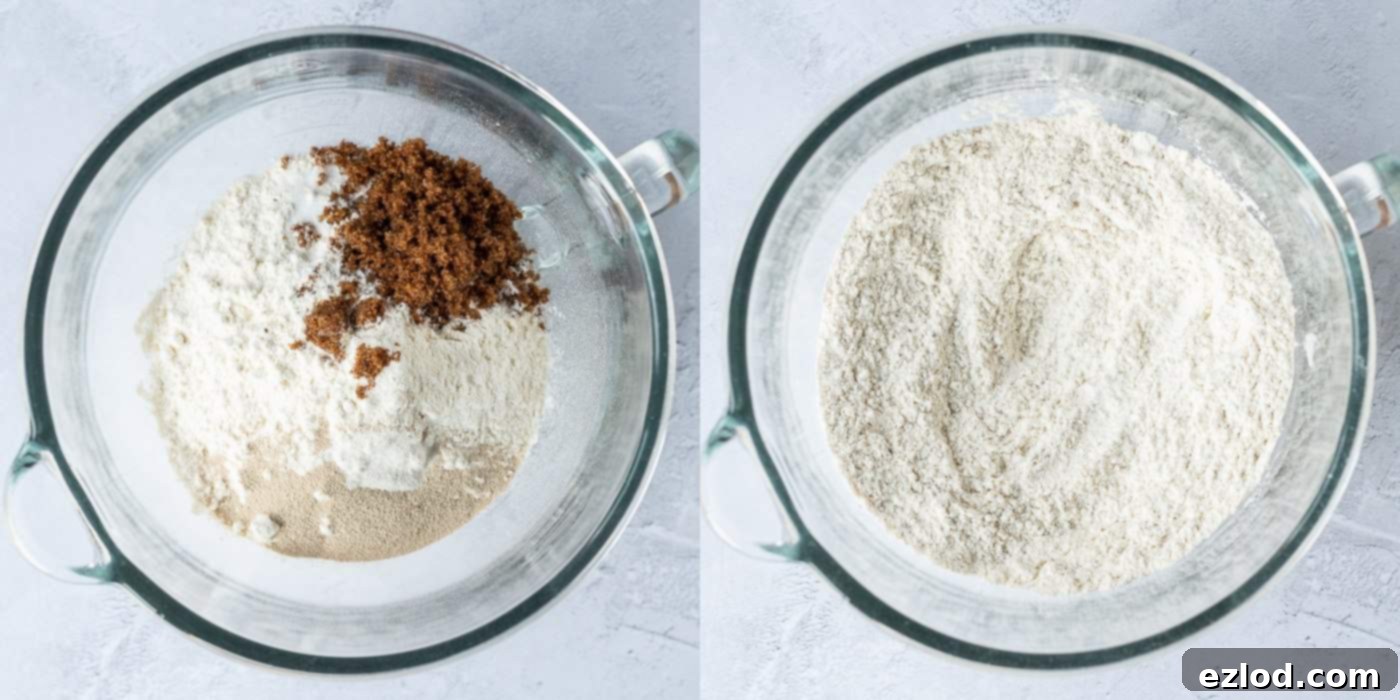
Next, introduce the wet ingredients: lukewarm non-dairy milk (soy milk is often preferred for its fat content, which adds richness), melted vegan block butter, and a generous dollop of treacle or molasses. The treacle is crucial here, not just for its rich flavor reminiscent of classic gingerbread, but also for its ability to keep the dough moist and tender. Mix these ingredients until they just come together to form a rough, shaggy dough.
Now comes the kneading. If using a stand mixer with a dough hook, knead on a medium-high speed for approximately 5-10 minutes. The goal is to develop the gluten in the flour, making the dough smooth, elastic, and stretchy. It should pull away cleanly from the sides of the bowl. Resist the urge to add more flour, even if the dough seems a little sticky; an overly stiff dough will result in dry, dense rolls. A soft, slightly tacky dough is exactly what you want for maximum fluffiness. For those without a stand mixer, kneading by hand on a lightly oiled surface is certainly possible, though it requires a bit more effort and can be a messy but gratifying experience. A bench scraper will be your best friend for managing the sticky dough.
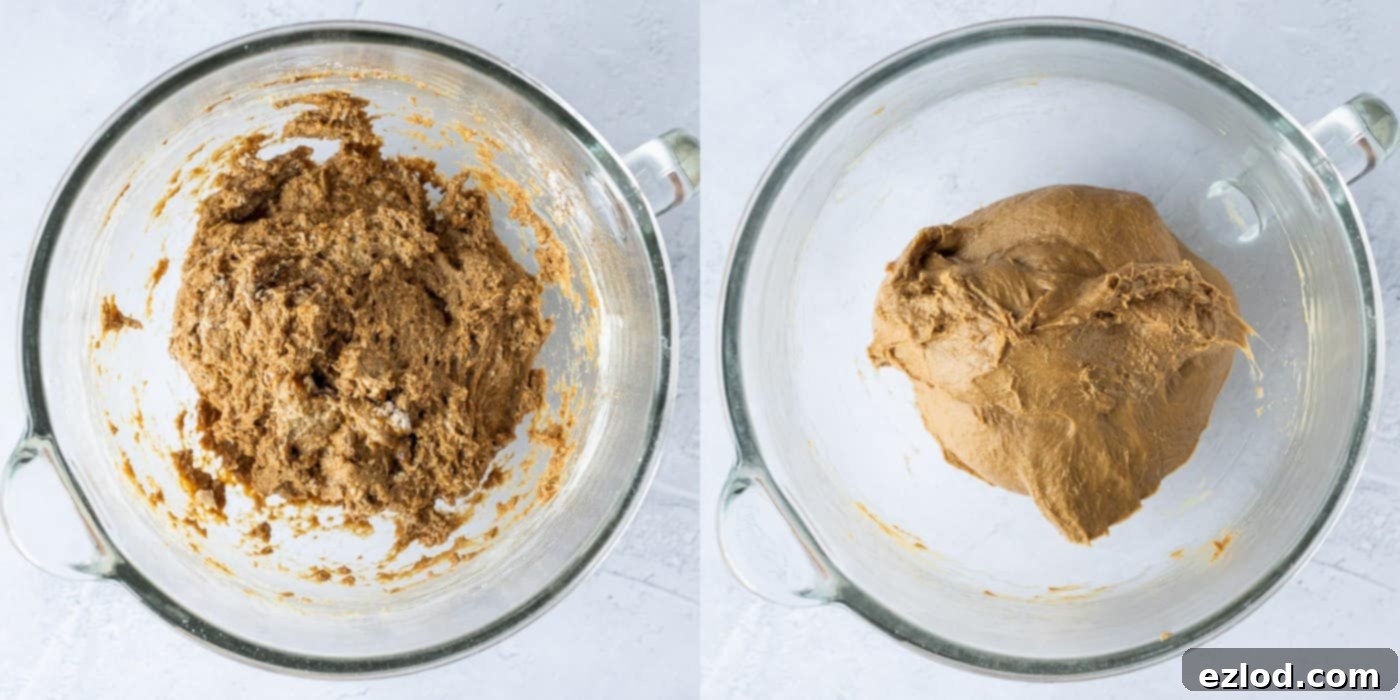
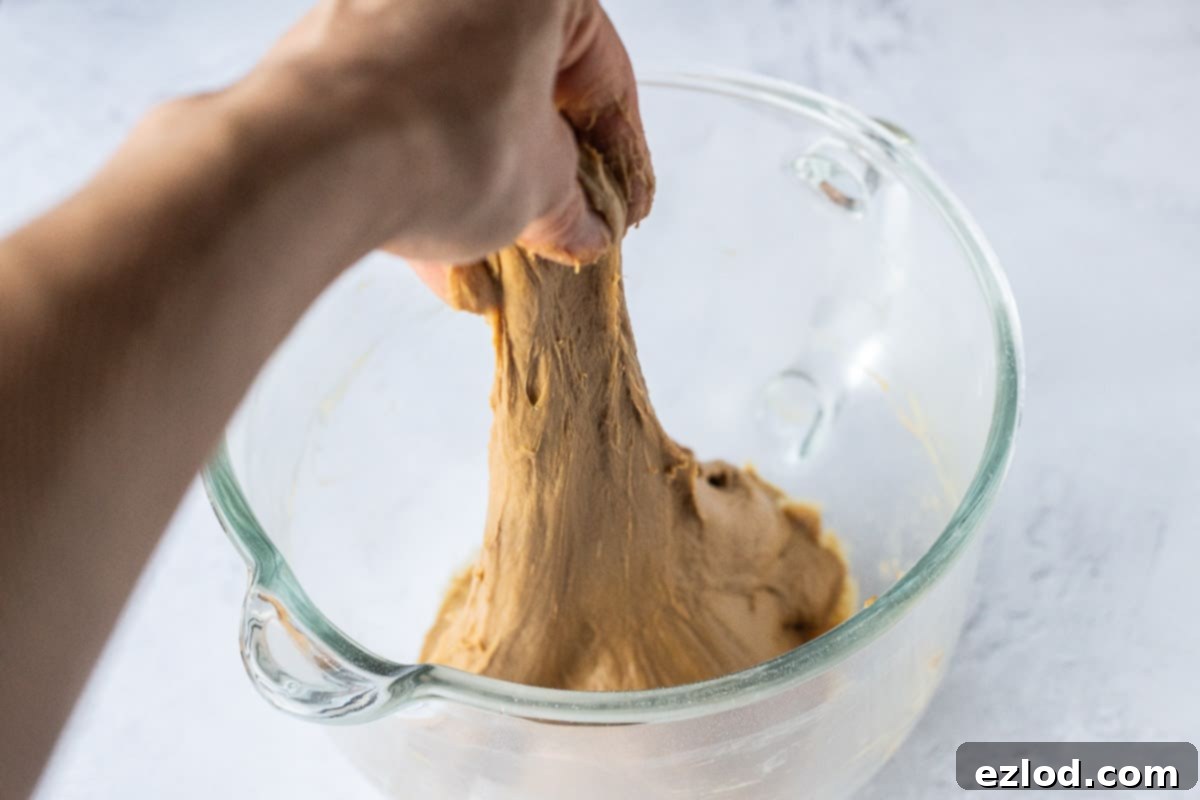
The First Rise: Patience is Key
Once kneaded, gently shape the dough into a ball and place it in a lightly oiled bowl. Cover the bowl loosely with plastic wrap or a damp kitchen towel to prevent it from drying out. Place it in a warm, draft-free spot, such as a slightly warm oven (turned off!) or a sunny windowsill. Allow the dough to rise until it has visibly doubled in size, which typically takes about 1-2 hours depending on the warmth of your environment and the activity of your yeast. This first rise is vital for developing flavor and creating that airy texture.
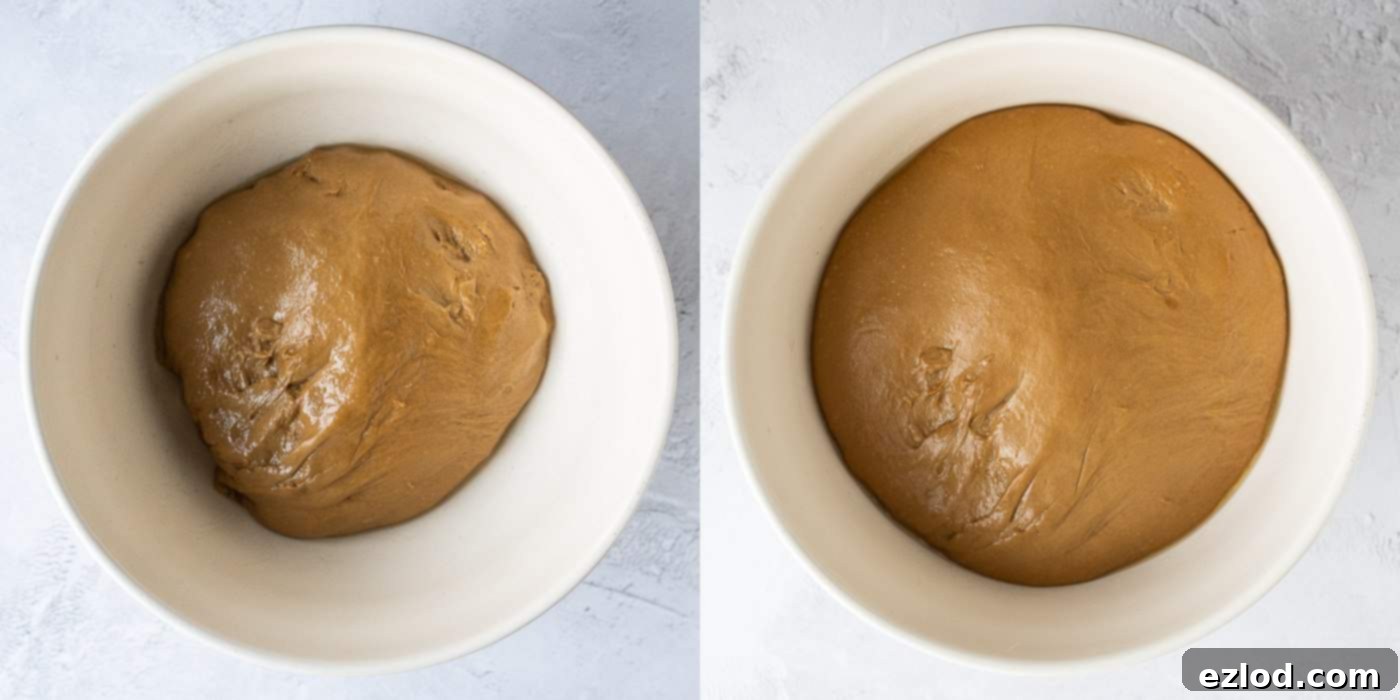
Crafting the Irresistible Filling
While your dough is enjoying its first rise, prepare the aromatic filling. In a small bowl, combine light brown soft sugar with ground cinnamon, ground ginger, and a touch of ground cloves. This spice blend forms the heart of the gingerbread flavor, creating a wonderfully fragrant and spicy layer within each roll. Set this mixture aside until your dough is ready.
Shaping and the Second Rise
Once your dough has successfully doubled, gently punch it down to release the trapped air. Give it a brief, 30-second knead to ensure all air bubbles are expelled, which helps create a more even crumb. Lightly flour your work surface and roll the dough out into a large rectangle, approximately 30×45 cm (12×18 inches). The goal is an even thickness to ensure consistent rolls.
Evenly spread a layer of softened vegan butter across the entire surface of the rolled-out dough. This butter acts as a binder for the sugar and spices and contributes to the rolls’ tender texture. Generously scatter the prepared ginger-cinnamon sugar mixture over the butter, pressing it down gently so it adheres. For that extra fiery kick, sprinkle the chopped crystallised ginger (or stem ginger) evenly over the spice mixture.
Carefully roll the dough up tightly from one of the long edges, forming a snug sausage shape. A tight roll is essential to prevent gaps in the finished cinnamon rolls. Using a sharp knife or even unflavored dental floss, slice the roll into twelve even pieces. Arrange these slices, cut-side down, in a prepared 23cm (9-inch) square baking tin or a 25cm (9.8-inch) round skillet lined with baking parchment. This parchment will make lifting the baked rolls out much easier.
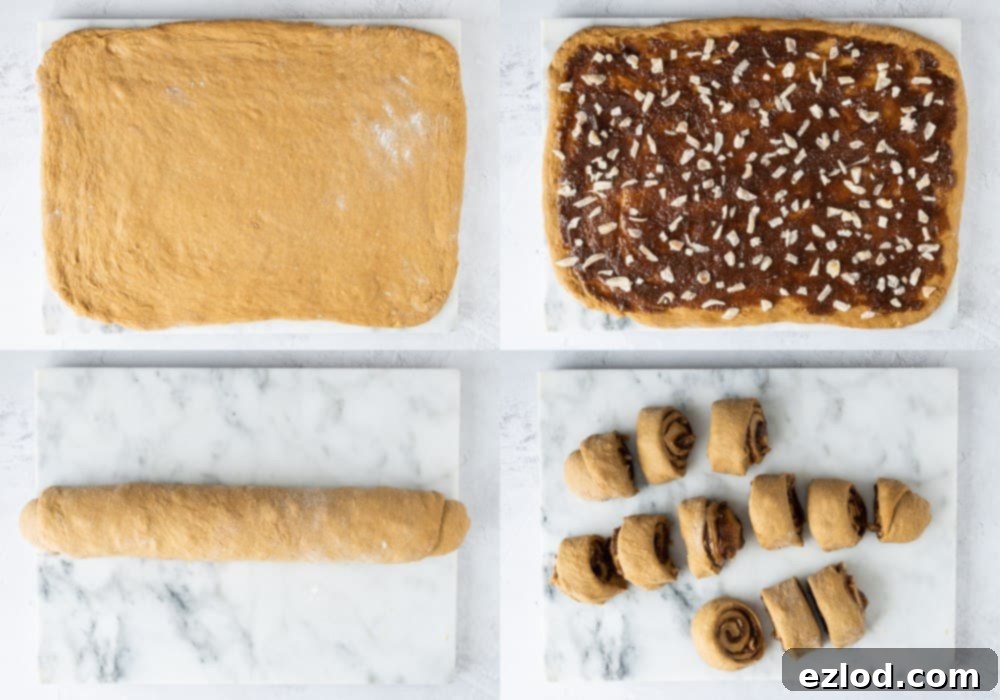
Loosely cover the pan of rolls and allow them to rise again for about 1 hour, or until they look visibly puffy and have expanded. To check if they’re ready, gently press one roll with a finger; the dough should spring back slowly. If it bounces back quickly, they need a little more time. During this second rise, preheat your oven to 180°C/350°F/gas mark 4.
Overnight Option: For ultimate convenience, you can prepare the rolls up to this point (after shaping and placing them in the tin, but *before* the second rise), cover them loosely, and refrigerate them overnight. The next morning, simply remove them from the fridge, allow them to come to room temperature and puff up for 30-60 minutes, then preheat your oven and bake as usual. This makes them perfect for a fresh-baked holiday breakfast!
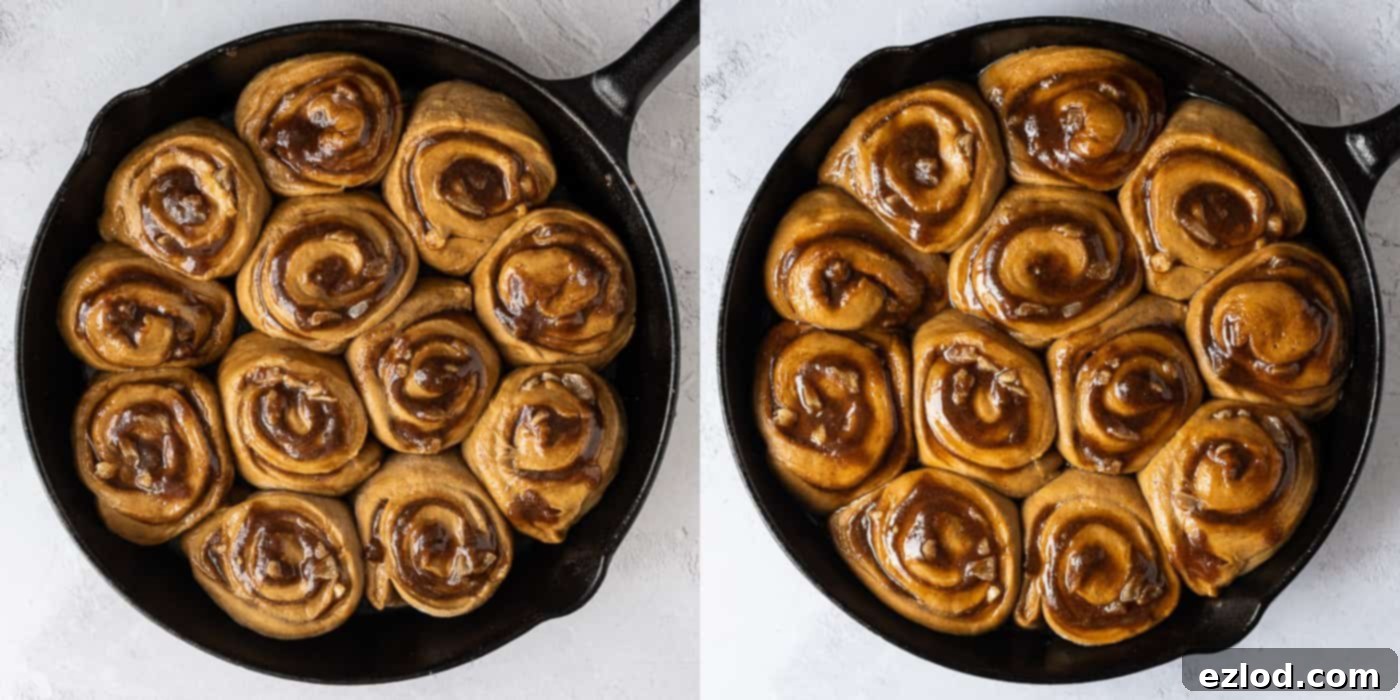
Baking to Golden Perfection
Once the rolls are beautifully puffy, transfer them to your preheated oven. Bake for approximately 30 minutes. The most accurate way to determine if bread is fully baked is by checking its internal temperature with a probe thermometer; it should register at least 94°C (201°F). This ensures no raw dough remains. If the tops of your rolls start to brown too quickly during baking, loosely cover them with aluminum foil to prevent over-browning.
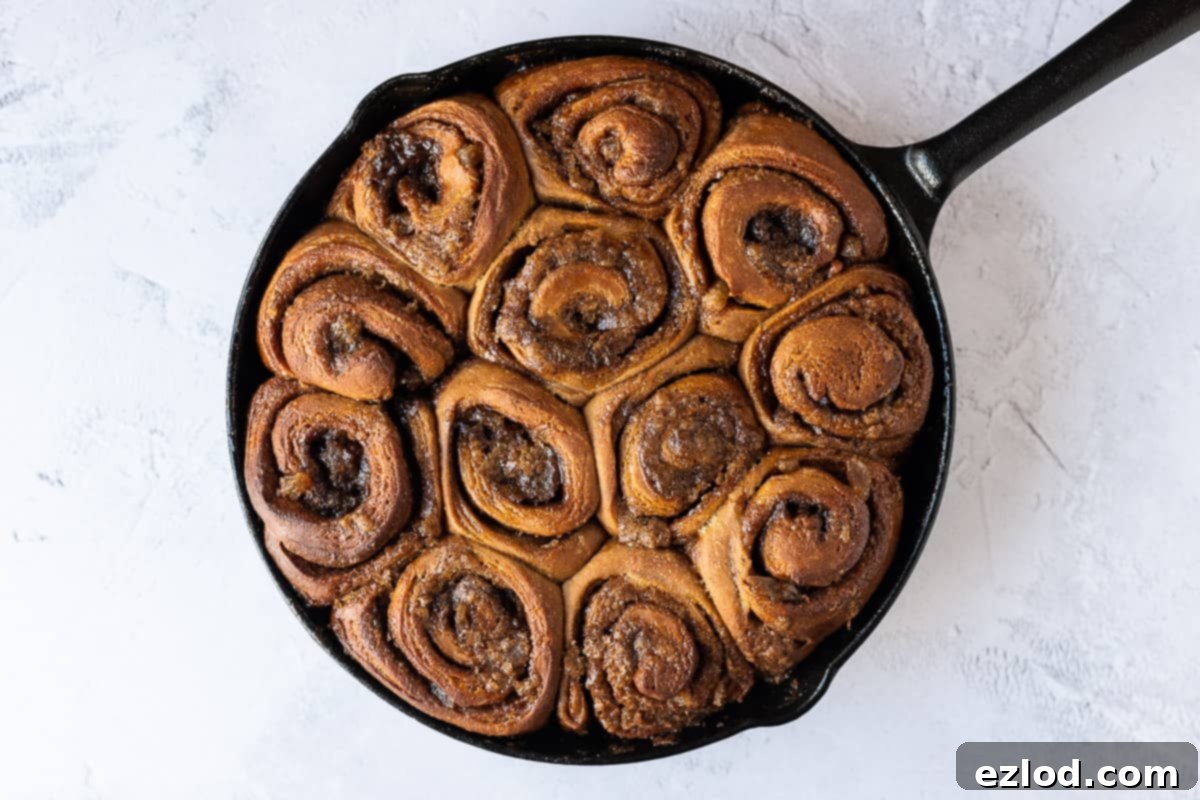
The Finishing Touch: Ginger Glaze
Allow the baked gingerbread cinnamon rolls to cool in the tin for about half an hour. This allows them to set slightly and makes them easier to handle. Carefully lift them out of the tin using the baking parchment and transfer them to a wire rack to cool further.
While they cool, prepare the glorious ginger glaze. Sift icing (powdered) sugar into a bowl to remove any lumps. Gradually stir in some syrup from a jar of stem ginger, adding a delightful, subtle ginger flavor, along with enough lemon juice or non-dairy milk to achieve a thick but pourable consistency. The lemon juice adds a lovely zing that cuts through the sweetness, while milk creates a richer, creamier glaze.
Drizzle the luscious glaze generously over the warm (but not hot!) rolls. The warmth will allow the glaze to melt slightly and coat the rolls beautifully. Serve immediately for the ultimate experience. Any leftovers can be stored in an airtight container at room temperature for up to two days.
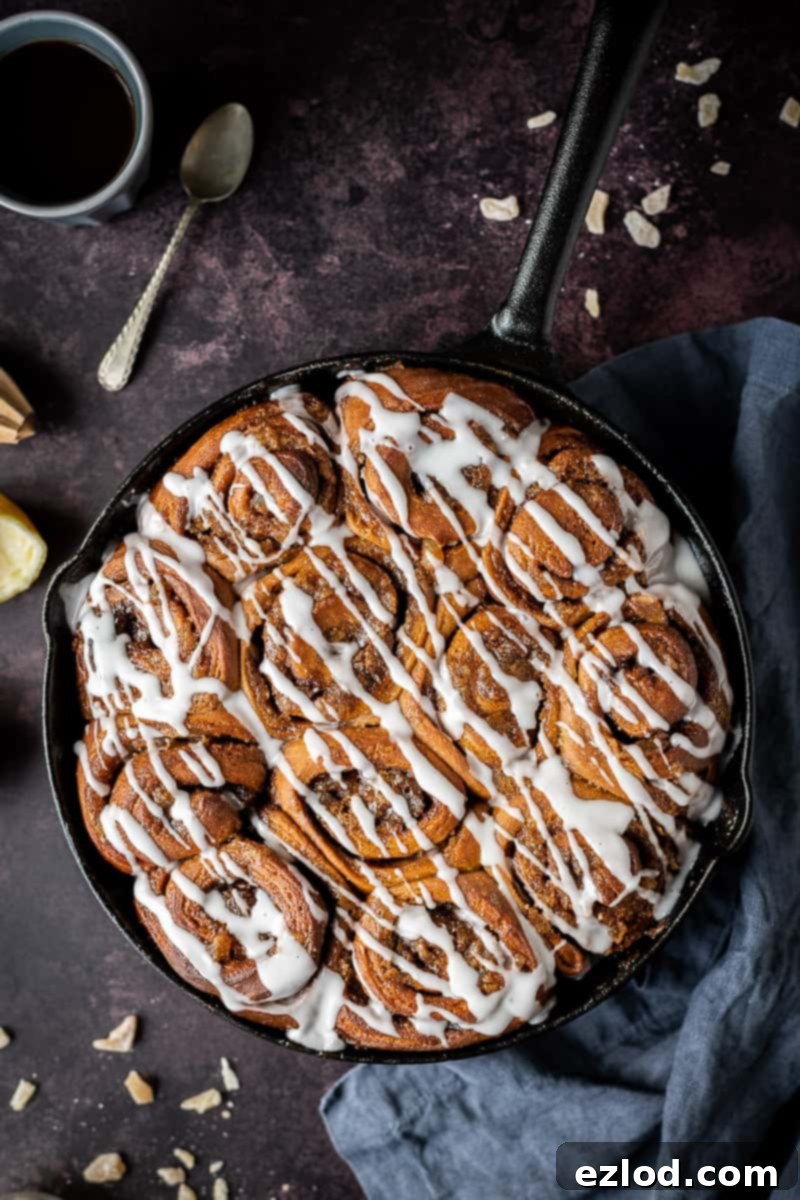
Frequently Asked Questions About Vegan Gingerbread Cinnamon Rolls
Can I Make These Gingerbread Cinnamon Rolls In Advance?
Yes, absolutely! While these rolls are undeniably best enjoyed on the day they are baked, you can certainly prepare them ahead of time. They will remain delicious for another couple of days, especially if you give them a quick warm-up in the microwave for about 10-20 seconds before serving. For a truly fresh experience on a specific morning, follow the recipe as written right up until the point where you’ve shaped the buns and placed them in your baking tin or skillet. Instead of letting them undergo their second rise at room temperature, cover them loosely and pop them into the refrigerator overnight. The next morning, simply remove them from the fridge, allow them to come up to room temperature for 30-60 minutes until they become wonderfully puffy, and then proceed with baking as directed. This method ensures you have warm, freshly baked vegan gingerbread cinnamon rolls ready for breakfast or brunch without the early morning hustle.
Can I Freeze Them?
Indeed! These baked gingerbread cinnamon rolls freeze exceptionally well. Once they have cooled completely, you can wrap them individually or in small batches and store them in an airtight, freezer-safe container or bag for up to one month. When you’re ready to enjoy them, simply allow them to defrost at room temperature for a few hours. For that fresh-baked warmth and softness, a quick refresh in the microwave for 10-20 seconds (or a few minutes in a preheated oven) will work wonders, making them taste almost as good as new.
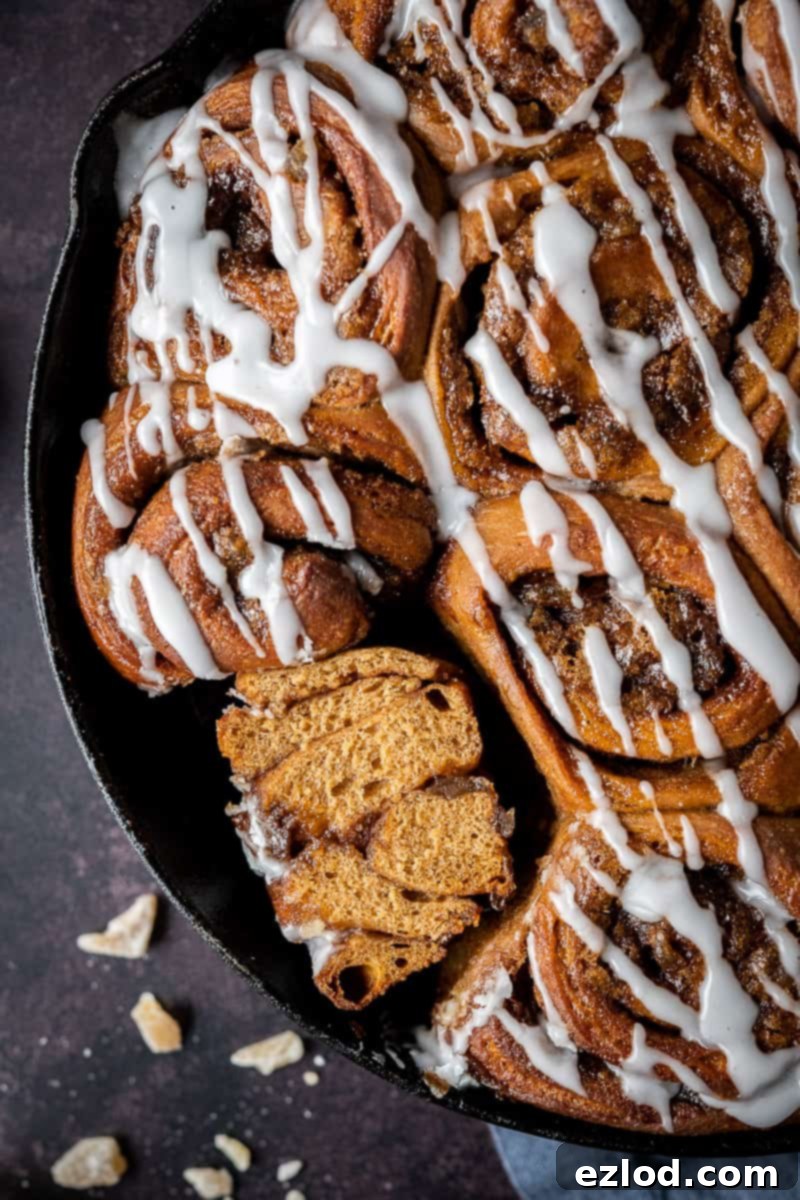
Top Tips for Perfect Vegan Gingerbread Cinnamon Rolls
- Choose the Right Vegan Butter: For successful baking, always use a foil-wrapped block vegan butter. Spreadable vegan margarines or butters that come in tubs often have a higher water content, which can negatively impact the texture and rise of your baked goods.
- Ensure Fresh Yeast: Yeast is a living organism, and its freshness is paramount for a good rise. Always check the expiration date on your yeast packet. If your yeast is old or inactive, your dough won’t rise properly, resulting in dense rolls. You can test active dry yeast by dissolving it in lukewarm water with a pinch of sugar; it should foam within 5-10 minutes. Instant yeast typically doesn’t require proofing.
- Plan Your Baking Schedule: This recipe offers flexibility! You can certainly bake these gingerbread cinnamon rolls from start to finish in a single day. Alternatively, to spread out the work and have fresh rolls for breakfast, prepare and shape the rolls the evening before, then refrigerate them overnight for their second rise. In the morning, let them come to room temperature for 30-60 minutes until puffy, and then bake.
- Flour Choice Matters: While plain (all-purpose) flour can be used in a pinch, white bread flour is highly recommended. Its higher protein content leads to better gluten development, which gives the cinnamon rolls their desirable chewy texture and open crumb.
- Customize Your Filling: Feel free to experiment with the filling! For added texture and flavor, consider incorporating some finely chopped nuts like pecans or walnuts, or even a handful of dried fruit such as raisins or cranberries. These additions will complement the gingerbread spices beautifully.
- Verify Doneness with a Thermometer: The most reliable way to know if your bread is fully baked is by using a probe thermometer. Insert it into the center of a roll; a reading of at least 94°C (201°F) indicates that the dough is cooked through. This prevents any raw dough from being served.
- Enjoy Them Fresh: While leftovers are delicious, these vegan gingerbread cinnamon rolls are truly at their peak on the day they are baked. The soft dough, gooey filling, and fresh glaze are simply incomparable. If you do have any remaining, warming them up slightly before serving will help restore some of that fresh-baked magic.
More Delicious Vegan Ginger Recipes to Explore:
If you’re a fan of ginger, you’ll love these other plant-based delights:
- Easy Vegan Ginger Cake
- No-Bake Chocolate Stem Ginger Tart
- Vegan Ginger Bundt Cake
- Pear and Ginger Jam
- Chocolate Gingerbread Biscuits
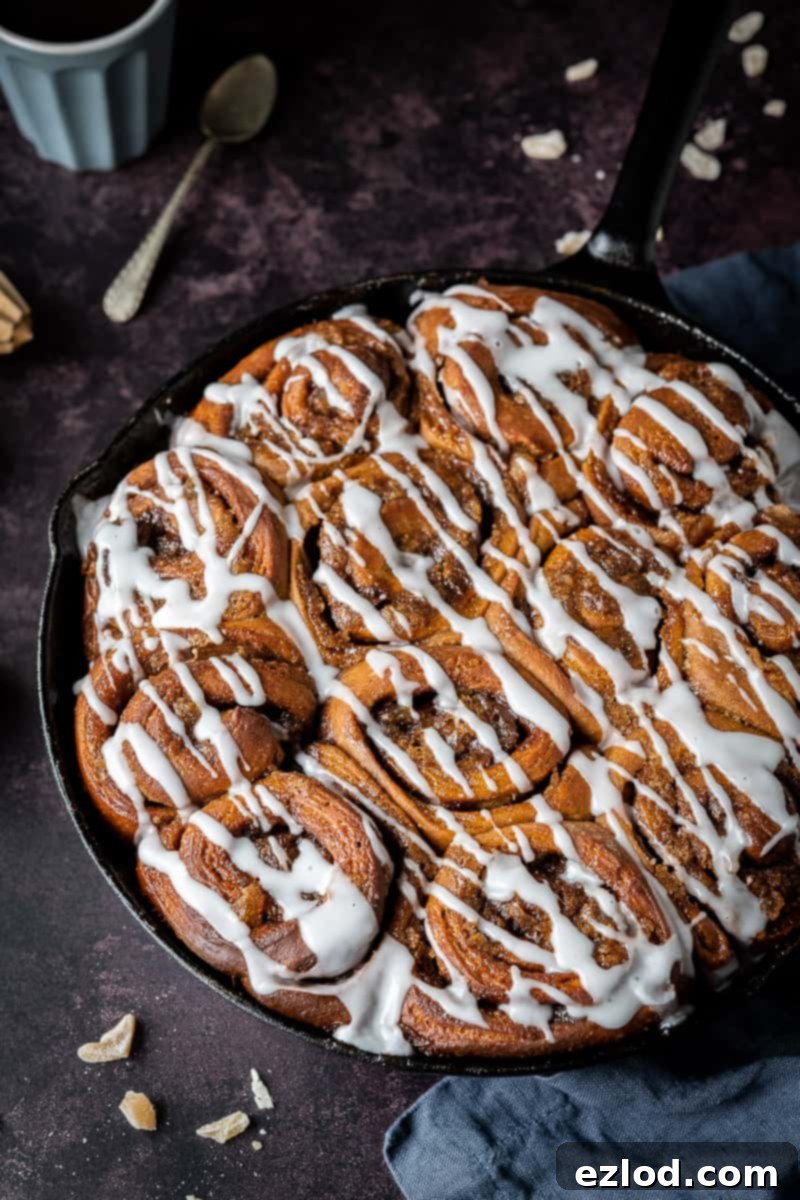
If you tried this recipe, we’d love to see your creations! Tag @domestic_gothess on Instagram and use the hashtag #domesticgothess.
*All images and content on Domestic Gothess are copyright protected. If you wish to share this recipe, please do so by using the provided share buttons. Do not screenshot or post the recipe or content in full.*

Print
Gingerbread Cinnamon Rolls (Vegan)
Ingredients
Dough:
- 450 g (3 + ¾ cups) white bread flour
- 8 g (2 ¼ tsp) fast action/instant yeast
- 1 tsp salt
- 40 g (¼ cup) dark brown soft sugar
- 250 ml (1 cup) lukewarm unsweetened non-dairy milk (soy is best)
- 60 g (¼ cup) vegan block butter melted and cooled slightly
- 50 g (2 Tbsp) treacle or molasses
Filling:
- 120 g (⅔ cup) light brown soft sugar
- 2 tsp ground cinnamon
- 2 tsp ground ginger
- ¼ tsp ground cloves
- 60 g (¼ cup) softened vegan butter
- 55 g (2 oz) chopped crystallised ginger/candied ginger/stem ginger
Glaze:
- 130 g (1 + ¼ cups) icing (powdered) sugar
- 1 Tbsp syrup from a jar of stem ginger
- 1 Tbsp lemon juice or milk
Instructions
-
To make the dough, add the bread flour, instant yeast, salt and dark brown soft sugar to the bowl of a stand mixer fitted with a dough hook and stir to combine.
-
Add the milk, melted vegan block butter and treacle or molasses and mix to form a rough dough.
-
Knead with the stand mixer on a high speed for about 5-10 minutes, until the dough is smooth and stretchy and pulls away from the sides of the bowl cleanly. The dough should be soft and sticky, don’t be tempted to add more flour as this can result in dry cinnamon rolls.
If you don’t have a stand mixer it can be kneaded by hand on a lightly oiled surface but it is quite a messy job and a bench scraper will come in handy.
-
Shape the dough into a ball and place it in an oiled bowl, cover and place in a warm place to rise until it has doubled in size – about 1-2 hours.
-
For the filling, mix together the light brown soft sugar, ground cinnamon, ginger and cloves in a bowl and set aside.
-
Once the dough has risen, punch it down and give it a brief thirty second knead to knock out any air bubbles.
-
Roll the dough out on a floured surface to an approx 30×45 cm / 12×18 inch rectangle then spread the softened vegan butter evenly over the surface. Scatter over the ginger cinnamon sugar mixture and press it down gently. Scatter over the chopped crystallised/stem ginger.
-
Roll the dough up tightly from one of the long edges into a sausage then use a sharp knife to slice the roll into twelve even slices. Arrange them cut side down in a 23cm/9inch square tin or a 25cm round skillet lined with baking parchment.
-
Cover loosely and set aside to rise for about 1 hour until nice and puffy. If you press one gently the dough should spring back slowly. If it springs back quickly then they need a little bit longer. While they are rising preheat the oven to 180°C/350°F/gas mark 4.
At this point you can also place them in the fridge to rise overnight (straight after shaping them – don’t leave them to rise then refrigerate them). The following morning, let them come up to room temperature for 30-60 minutes until they are puffy (preheat the oven in the meantime) and bake as normal.
-
Once the buns have risen, bake for about 30 minutes, until the internal temperature reaches 94°C/201°F on a probe thermometer. Cover them loosely with tin foil partway through baking if the tops start to colour too much.
-
Leave the cinnamon rolls to cool in the tin for about half an hour then carefully lift them out using the baking parchment and place on a wire rack.
-
To make the ginger glaze, sift the icing sugar into a bowl and gradually stir in the ginger syrup and enough lemon juice or milk to form a thick but pourable glaze. Drizzle the glaze over the tops of the buns and serve. Store any leftovers in an airtight container for up to two days.
Notes
- For the best results make sure that you follow the recipe closely. As always, I highly recommend using the gram measurements (with a digital scale), rather than the cup conversions. Cup measurements are simply not accurate enough for baking and I cannot guarantee the best results if you use them.
- Make sure that you use a foil wrapped block vegan butter rather than the spreadable kind in a tub which has too high a water content for baking.
- Make sure that your yeast hasn’t expired! Out of date yeast can lead to bread that doesn’t rise.
- You can make these gingerbread cinnamon rolls all in one day or you can break the work up a bit by preparing the rolls in the evening and placing them in the fridge to rise overnight then baking them in the morning once they have come up to room temperature.
- The recipe will work using plain (all-purpose) flour, but bread flour gives the best texture.
- You can add some chopped nuts or dried fruit to the filling if you like.
- The best way to tell if bread is baked properly is to check the internal temperature with a probe thermometer. It should reach at least 94°C/201°F.
- The gingerbread cinnamon rolls are best eaten on the day they are baked but any leftovers will still be good the next day; especially if you warm them up a bit before serving.
